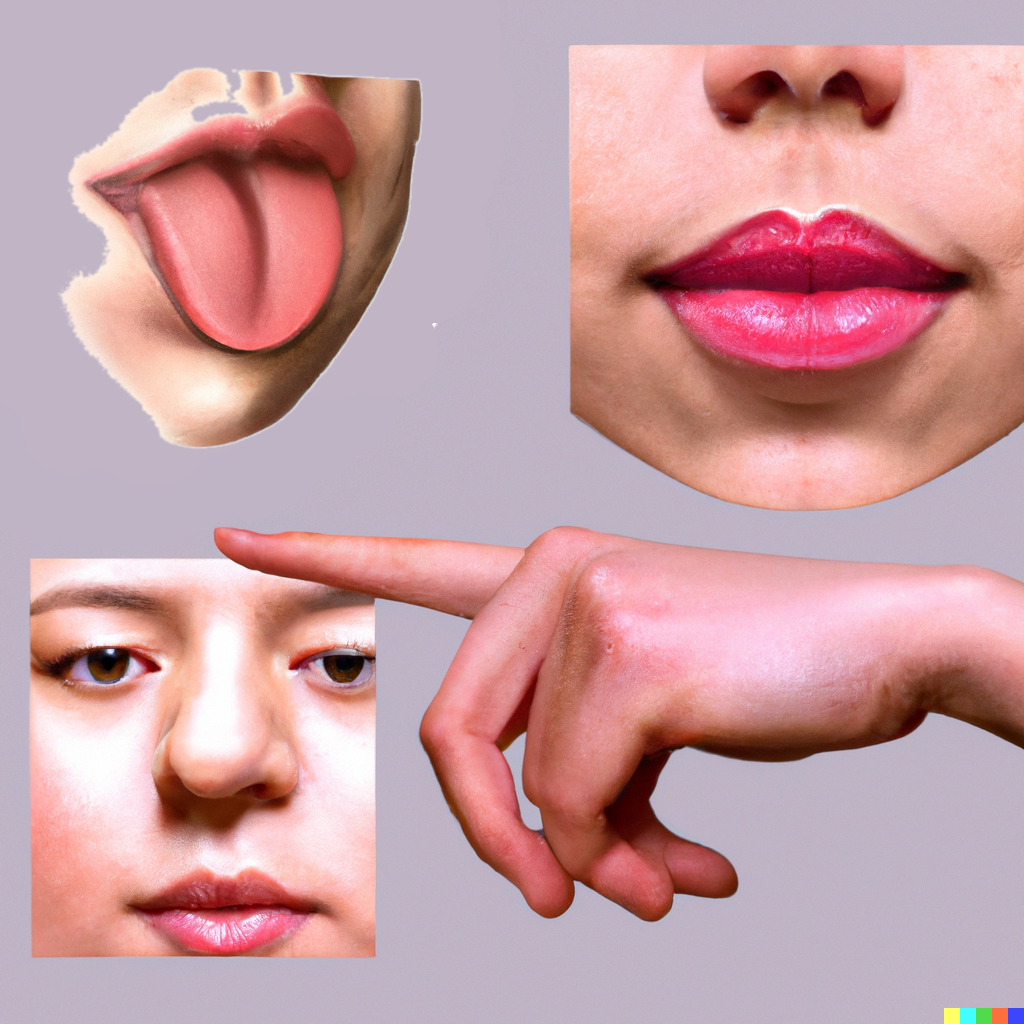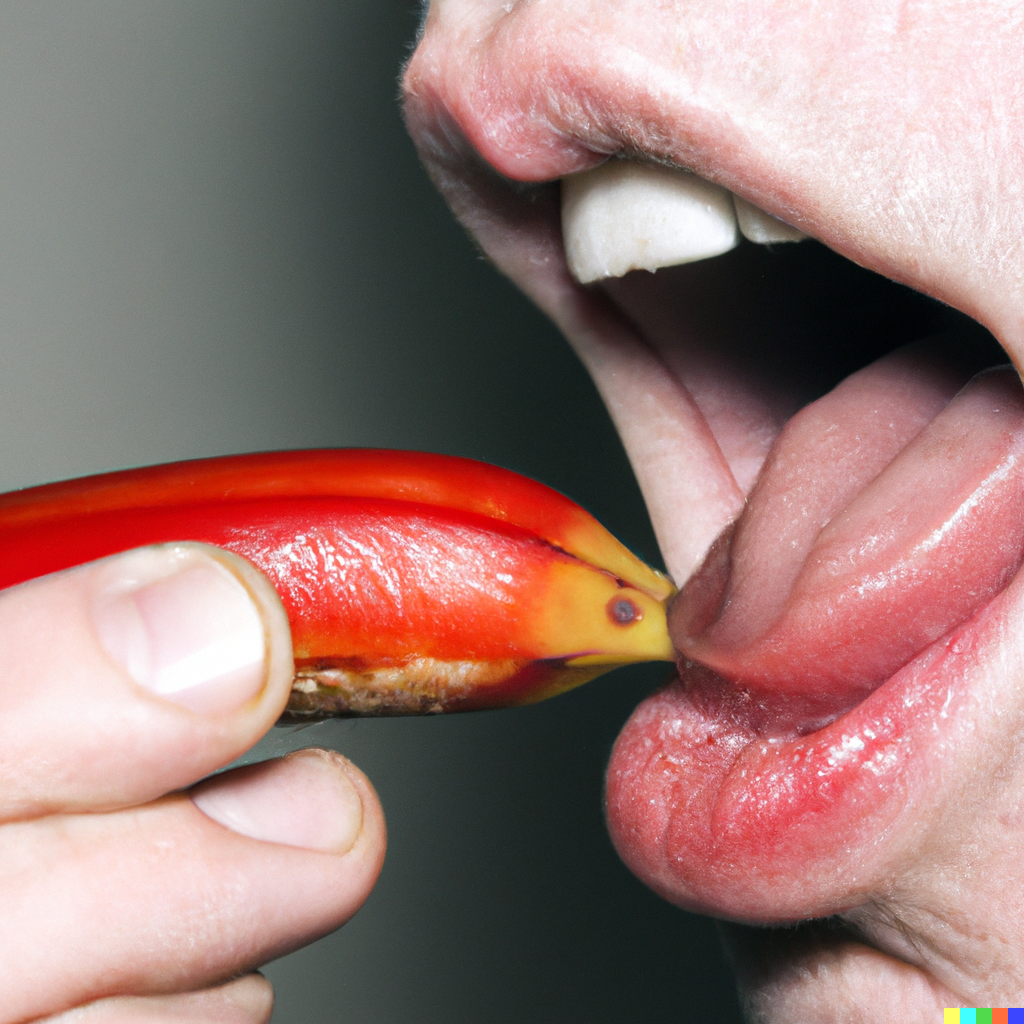Trending searches

Exploring the Sensation of Mouth Feel
SUBSCRIBE TO OUR BLOG
Promotions, new products, and recipes.
The physical feelings we have when consuming food and beverages are often referred to as ‘mouth feel’, a term which helps explain the way certain foods can be both creamy or luxurious, and why some drinks remain on our palate for longer. This blog post looks into this concept in greater detail by examining its impact on sensory experiences along with how culinary experts use it to create special flavours. Mouth feel has become increasingly important within the world of food, providing an insight into what makes them so delicious.
Key Takeaways
-
Mouthfeel is a complex sensory experience related to the physical feel of food and drinks in our mouths.
-
It can be influenced by factors such as rheological properties, tactile sensations, temperature and chemical perceptions.
-
Mouthfeel plays an important role in sensory analysis for assessing food quality and manipulating texture through techniques like molecular gastronomy.
Understanding Mouthfeel 
Mouthfeel is a complex sensation that goes beyond what we taste and involves physical features of food or drinks, such as temperature, texture and even the force it takes to chew/swallow. Food critics give mouthfeel considerable attention when discussing dishes because specific textures like creaminess can have an impact on one’s overall experience. Mouthfeel plays a major role in many foods but particularly beverages. For instance, wine’s feel changes depending on particles present which directly affects its flavorability. Speaking people are more likely drawn towards something based off how they perceive it through touch over flavoring alone, this holds true across various edibles with tastes only contributing secondarily at best.
Origins of the Term
Mouthfeel is a technical term coined in the 1930s to describe the sensation of food or drink when it’s experienced through one’s mouth. Chinese speakers refer to this as ‘kugn,’ emphasizing how vital these subtle textures and flavors are. It has since become an essential part of understanding and appreciating what we eat or sip on – from beer tasting all way up to wine tasting for connoisseurs . This has led not only those involved in professional contexts such as food science but also casual consumers towards examining many different “mouth examples” that demonstrate just how varied these sensations can be.
Factors Influencing Mouthfeel
Mouthfeel can be affected by different aspects such as tactile sensations, temperature, and chemical perceptions. As an example of this in food items like emulsions, the type and amount of colloidal particles along with macromolecules are factors that heavily influence mouthfeel characteristics. There is a breakdown of fat droplets when consumed which adds to their capability to coat tongue influencing its texture experience while eating it.
Beyond these components individual preferences also shape ones own perception on mouthfeels based off prior experiences end cultural background. For instance some may prefer creamy textures whilst others choose more grainy textural profiles. Our appreciation towards the delicate nuances between each foods’s flavor becomes greater due to both expanded exposure from varied cuisines worldwide coupled with refining sensibilities .
Mouthfeel in Beverages

Drinking our beloved beverages can be an amazing sensory experience, and mouthfeel plays a huge role in this. From beer to wine to tea, each has its own unique characteristics that influence the sensation of it on your tongue - viscosity, temperature, carbonation level as well as acidic notes plus compounds like tannins or proteins all have their part. All these components come together resulting in remarkable experiences when sipping any beverage which makes for such a great enjoyment overall!
Wine Tasting and Mouthfeel
The art of wine tasting involves learning to appreciate the myriad nuances that come from mouthfeel characteristics. These sensations, such as sweetness, sourness and bitterness (not forgetting “word” mouthfeel), are informed by compounds like tannins and acids present in a bottle of wine which combine with viticulture practices resulting in subtle variations on flavor texture experienced upon the palate. For instance one might experience astringency if there is an elevated concentration of tannin while less acidity translates into smoother sips – this certainly applies for pinot noir! Through understanding how these elements interplay we can enjoy a richer appreciation each time our lips wrap around each sip. Allowing us to savor every nuance encountered within this fascinating world.
Beer Tasting and Mouthfeel
When it comes to beer tasting, having an understanding of mouthfeel and how it can influence the overall experience is essential. Mouthfeel attributes such as warmth due to alcohol content, dryness caused by tannins extracted from casks or puckering on the palate contribute significantly to our enjoyment of each brew. Not only that. Sensations like carbonation fizzing in your mouth combined with smooth or bitter notes Amplify a range of diverse flavors within different beers. For instance, alcoholic beverages may result in mild burning feelings when consumed- which are known as “mouthwarming”.
Tea Tasting and Mouthfeel
Tea tasting is a domain wherein the sense of mouthfeel can really influence one’s overall sensory experience. As seen in China, where they have devoted an entire component to this feeling - called “Co Gan” - which involves perceiving thickness and viscosity around your palate accompanied with sweetness aftertaste. Several determinants like tea polyphenols, its temperature or the brewing time are responsible for variations in it. Investigating into such fine aspects allows us to comprehend Intricacies that make drinking tea so gratifying and absorbing. Evaluating nuances including texture, warmth as well as impressions on our mouths helps enhance knowledge about each cup when savoring from start to finish .
Mouthfeel Descriptors

Mouthfeel descriptors can help us better understand and articulate the experiences we have when consuming food and beverages. These can be classified as either texture-based, such as soft or chewy, or sensation-based which could include sensations like astringency and a cooling effect after drinking. By having this common language to talk about mouthfeels it allows us to share our perceptions more clearly while deepening our appreciation for culinary delights.
Texture-Based Descriptors
Texture-based descriptors are essential for describing the physical characteristics of food and beverages such as chewiness, softness, or crunchiness. Through employing these terms we can articulate our experiences with mouthfeel which gives us a foundation to express what foods appeal more than others. Understanding texture allows us to compare different food textures effectively by providing insight into how they feel in the mouth. Mouthfeel plays an integral role in understanding our sensory perceptions while also guiding conversations about personal preferences related to taste and overall experience when it comes consuming various types of food or drinks .
Sensation-Based Descriptors
The focus of sensation-based descriptors is on the physical and chemical sensations we experience while consuming food or beverages. These words allow us to discuss mouthfeel more accurately, describing certain aspects such as astringency, cooling effect and waxy aftertaste that affect our overall appreciation for a product. By employing these types of terms we can go in depth when it comes to capturing how something tastes and feels in order to better communicate our impressions with others.
Manipulating Mouthfeel in Food Science

The food industry has been undergoing some major developments, as scientists work to create innovative textures and sensations that would alter the overall mouthfeel of our meals. Techniques such as molecular gastronomy, emulsifiers, and fat replacers are all used in order to modify how something tastes or feels when we eat it. This fusion of art with science has significantly broadened what kind of experiences can be derived from consuming a meal! We now have an incredible variety new flavourings which revolutionizes how people interact with their food on different levels.
Molecular Gastronomy
Molecular gastronomy is the application of scientific principles for manipulating flavors, textures and mouthfeel to create unique culinary experiences. By using methods such as emulsifiers, fat replacers and hydrocolloids chefs are able to craft novel tastes and texture like foams, gels or spherification. This cutting-edge cooking technique helps increase our knowledge of food from a taste perspective by presenting diverse properties which surprise us with interesting new sensations when we eat it. Molecular gastronomists strive continuously in pushing boundaries beyond what was considered traditional regarding flavor combinations combined with distinctive mouthfeel effects making this one area where innovation happens often much more than any other areas related to cuisine today.
Fat Replacers and Emulsifiers
Food scientists rely on fat replacers and emulsifiers to recreate the texture and mouthfeel of full-fat foods. An example is a biopolymer aggregate, formed in spherical particles that imitate those found in regular items. On top of providing structure, emulsifiers also help blend components such as oil and water which tend to separate naturally. This means we can enjoy our favorite dishes with all their original flavor while still benefiting from reduced calorie content due to decreased fat level, without compromising on either taste or texture! We are presented with healthier food options accompanied by a creamy indulgent feel so everyone can savor this pleasure healthily.
Cultural Differences in Mouthfeel Perception

Mouthfeel is an experience that can vary dramatically depending on both our cultural backgrounds and the physical qualities of what we eat or drink. Our individual experiences affect how we perceive texture, flavor, and other sensations associated with food or beverages. Acknowledging these distinctions leads to a heightened appreciation for different mouthfeels from around the world. It broadens our knowledge base of flavors and textures while also making each taste more enjoyable.
Eastern vs. Western Cuisine
Western cuisine typically focuses on providing tasty flavors to its consumers, while Eastern meals are often characterized by their textures and sensations. This is due to the frequent use of ingredients such as noodles, rice, and vegetables in these dishes that contribute a textural experience. Eastern cuisine emphasizes more than just flavor during consumption. It also pays attention to mouthfeel as well for different levels of sensation when eating food from this region.
Culinary diversity around the world allows us explore various taste profiles using flavor combinations along with enjoyable texture for our own unique experiences when dining out or cooking at home!
Influence of Personal Experience
The sensation of mouthfeel is shaped greatly by our own experiences. As we consume different foods and drinks over time, our senses become more finely attuned to the complexities of mouthfeel. Take for instance someone who has travelled widely around the world, they may possess a more advanced sense of taste than one whose culinary palate is not so varied.
Factors such as age group, individual preference or prior exposure can all be influential in how people perceive this texture. Understanding that there are personal aspects which contribute to understandingmouthfeeel helps us appreciate its diverse rangeof textures and flavours even further.
Mouthfeel and Sensory Analysis

Sensory perception, commonly known as sensory analysis, involves assessing the quality of food items through our five senses: sight, smell, taste touch and hearing. Mouthfeel is a key component when it comes to this process since how we perceive something affects our overall satisfaction with food or beverages. Analyzing all factors that comprise mouthfeel allows us to make better decisions about what type of products we consume more accurately.
The importance of understanding each factor connected with mouthfeel cannot be overlooked. By doing so can refine your judgments surrounding the quality assessment for foods and drinks alike while helping you Enjoy them too! This knowledge provides invaluable insight into determining which goods will please not only yourself but others as well.
The Role of the Five Senses
The intricacy of sensory perception when it comes to food and beverages is remarkable, with mouthfeel being a fundamental part in determining our experience. Sight can set the stage for what’s to come. As an example, how something looks has a big impact on people’s expectations and enjoyment. Smell too plays its role by producing memories or emotions that affect one’s interpretation of texture. Taste helps boost or diminish sensations from the entire mélange. Understanding each sense’s involvement with regard to evaluating mouthfeel gives us an even clearer perspective towards enjoying both culinary dishes and libations alike.
Assessing Food Quality
The evaluation of food quality by sensory analysis is an essential part of the process, encompassing several attributes that make up the overall experience - appearance, aroma, texture and sound. Of particular importance in this assessment is mouthfeel. Understanding its influence on taste as well as preference can help to create more appetizing meals and snacks.
To assess these aspects accurately with precision requires trained testers who are able to recognize all factors influencing a product’s acceptability or otherwise based upon their evaluations which may include Texture-, Taste- or even Sound experiences . By analyzing such details during sensory testing we ensure only top-notch products reach consumers with consistent excellence in quality every time they purchase them from stores.
Hydrocolloids Used to Improve Mouth Feel
Mouthfeel is a critical factor for any food product, and hydrocolloids such as gums and thickeners can be used to enhance its texture. This will give the item in question a smoother consistency that feels more pleasant while eating. It’s important to strike an appropriate balance between mouthfeel enhancement and preserving taste or limiting cost. The way these substances are employed determines whether they create the desired effect without sacrificing flavor or making meals expensive. Food scientists must understand their role in improving mouthfeel if they want customers to have satisfying sensory experiences at no detriment of either quality or price tag.
Frequently Asked Questions
Mouthfeel is a complex topic, and to help us gain more insight into it we have compiled this collection of commonly asked questions about the various aspects of mouthfeel: from its definition, influencing factors, manipulation in food science to how personal experience and culture shape our perception.
Summary
Mouthfeel is a complex sensory experience that plays an important role in our food and drink enjoyment. To properly assess quality, it’s essential to understand its intricacies which can be influenced by composition of the item consumed, personal experiences as well as cultural background. Taking this into consideration enables more informed decisions about what we consume plus enhanced gastronomic pleasure resulting from improved knowledge around mouthfeel through food science methods.
Frequently Asked Questions
What is another word for mouth feel?
When tasting wine or examining food, it is possible to assess the texture (also referred to as mouthfeel) from beginning to end—from initial perception all the way through aftertaste.
Why do people say mouth feel?
Referred to as mouthfeel, the texture and viscosity of food or drink in one’s mouth create an overall experience which is distinct from both its taste and aroma. This concept is especially important for sommeliers when discussing how wine feels on the tongue but it can also be applied more Whenever considering a meal’s flavor profile.
What is the difference between mouth feel and texture?
Mouthfeel is an amalgamation of physical, chemical and sensory perceptions which are experienced when consuming food or drinks. It encompasses texture but Includes the experience as it transforms in your mouth. Taste sensations along with aftertaste feelings also form part of this perception. Texture meanwhile, describes how solid a particular edible is at consumption time and its tangible properties.
What is an example of a mouthfeel?
Mouthfeel is a sensory characteristic that describes the texture and viscosity of food or beverage when tasted in the mouth. Expressions like firm, soft, chewy, crisp and spreadable are used to help capture its particular sensation.
What is mouthfeel?
Mouthfeel is a sensation perceived when eating or drinking something that incorporates its texture, temperature and chemistry. It comprises of the tactile feeling experienced from consuming food or beverage.
We recommend reading: How Hydrocolloids Improve Mouthfeel

About the Editor
About the Chef Edmund: Chef Edmund is the Founder of Cape Crystal Brands and EnvironMolds. He is the author of several non-fiction “How-to” books, past publisher of the ArtMolds Journal Magazine and six cookbooks available for download on this site. He lives and breathes his food blogs as both writer and editor. You can follow him on Twitter and Linkedin.


|
About the Author Ed is the founder of Cape Crystal Brands, editor of the Beginner’s Guide to Hydrocolloids, and a passionate advocate for making food science accessible to all. Discover premium ingredients, expert resources, and free formulation tools at capecrystalbrands.com/tools. — Ed |
- Choosing a selection results in a full page refresh.




